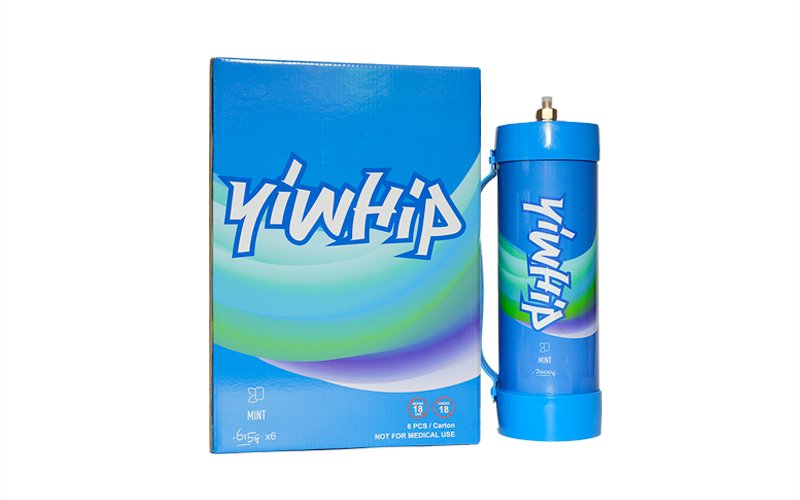Nitrous Oxide Whipping Cream: More than just a culinary ingredient, nitrous oxide has become a hot topic in legal discourse across the United States. Known as 'Nangs' or ‘hippie crack’, nitrous oxide—popularly associated with the kitchen through its role in whipped cream dispensers—has seen a rise in recreational use due to its euphoric and mildly dissociative effects. However, this trend brings about a wave of ethical, social, and regulatory debate. This article dissects the evolving conversation around **nitrous oxide whipping cream as a legal high, particularly in the context of current US market dynamics.
What Exactly Is Nitrous Oxide, and How Did It Get Associated With Recreation?
Chemically known as N₂O, nitrous oxide was first discovered by chemist Joseph Priestley in 1772. Its ability to induce laughter led to early experimentation in the 19th century as an anesthetic. The connection to kitchens came later when it was encapsulated into small steel canisters known as whip-its for use in cooking.
These cream chargers, containing compressed nitrous oxide gas, quickly gained popularity in home and commercial kitchens for instant foam preparation. Despite being explicitly labeled for food service only, the psychoactive side effect of short-lived euphoria turned many of these canisters into street favorites—especially at rave scenes and music festivals.
A Delicate Divide: Lawfully Used, Illicitly Abused
What creates this legal dilemma? In the U.S., **the legality varies significantly by state**, but not from the federal standpoint itself. According to existing regulations under the Controlled Substance Analogue Enforcement Act of 1986, N₂O hasn't been classified under controlled substances per se.
- California: Illegal for recreational purpose
- New York & Virginia: Banned from distribution except licensed professional sale
- Texas: Regulated sale based on intent and volume purchased
In essence, while it is technically legal as long as the substance's end-user purpose doesn't align with “driving behavior change," many jurisdictions have attempted legislative patches, making its casual use increasingly fraught. Online availability via vapor shops and head shops only adds gray area to oversight challenges.
Detective Consumer Behavior in the Age of Social Media
If one follows YouTube trends and TikTok dance parties, they're likely familiar with viral content showing teens inhaling gases directly into plastic bags or balloons—a practice known among teens as “balloons" or simply chasing temporary sensory distortion for under $5 at party stores.
Societally dubbed as "laughing gas," the trend continues partly due to digital amplification, creating peer-driven normalization cycles. Young people are bombarded with images where harmless-sounding phrases like “get that quick buzz without consequences" dominate captions, despite well-documented neurological risks linked to oxygen deprivation and even occasional fatalities. This presents public health advocates and parents with new hurdles.
Potential Consequences and Real Risks to Public Health
N₂O inhalants might feel fleeting, but neurotoxic damage can be chronic, especially if exposure is sustained. Vitamin B-12 depletion—inducing neuropathy and even potentially irreversible limb paralysis—isn’t theoretical fiction—it's biochemical science documented over decades.
- Lip cyanosis: Indicating poor circulation in lungs after heavy exposure
- Hallucinations and memory lapses
- Loss of coordination – especially dangerous when operating machinery or vehicles
Certain users suffer adverse cardiac episodes, and cases involving sudden unconsciousness aren’t infrequent. As awareness climbs, so do efforts from both lawmakers and educational institutions pushing for stricter control, including school policy revisions.
Economic Factors Behind Legalization Pushback
Beyond moral dilemmas lie economic interests complicating straightforward prohibitions. Manufacturers of bulk nitrous oxide used in car engine performance (especially "power adder" tuning communities") oppose restrictions, arguing their legitimate industrial and mechanical purposes may be inadvertently hindered by poorly framed recreational bans. Meanwhile, vendors catering to café-style coffee and upscale desserts depend heavily on the same disposable nitrous oxide bulbs to maintain consistent product delivery and texture standards across millions of businesses daily.
Therefore, crafting clear laws distinguishing commercial use from consumption for mood alteration has been tricky. There are fears that overly strict enforcement will disrupt culinary sectors rather than target actual misuse effectively—an all-too-familiar regulatory tightrope walk seen previously in cannabis debates before medical and recreational clarity evolved state by state.
The Future of Regulation and Emerging Technologies That May Change Everything
Emerging tools—ranging from AI behavioral modeling tracking sales spikes correlated to underage purchases in certain retail environments—to blockchain traceability systems integrated into supply chain distributors could enable regulators to enforce smarter restrictions with less disruption for legitimate business usage. While not foolproof, tech innovations may serve better alternatives where human enforcement proves impractical, especially given low-level law-breaking status compared to opioid or alcohol issues.
Nonetheless, proactive education campaigns—not dissimilar to tobacco reduction initiatives—could help reduce demand without outright criminalizing access to a non-addictive, non-degenerative agent whose appeal primarily relies upon accessibility and social perception biases formed through influencer marketing.
Conclusion – A Balancing Beam in Ongoing Regulatory Debate
The story of nitrous oxide in the U.S. market exemplifies an intricate balancing act between cultural acceptance of mind-altering compounds and necessary precaution rooted in evidence-based research. Whether you consider it a kitchen essential or emerging intoxicant gateway for youth matters—and depends heavily on who holds the canister. While its dual-use poses unique legislative puzzles yet unsolved, one cannot ignore that N₂O's trajectory mirrors other controversial compounds before finding their appropriate place within law, industry practices, and everyday consumers' lives. Only time will tell where society decides nitrous truly belongs—on dessert tables, behind pharmacy counters…or strictly regulated away altogether.
- Total Key Points: Nitrous oxide remains largely legal though restricted under some U.S. jurisdictions for non-medical usage; commonly found in whipping cream chargers but often misused recreationally
- Key Concerns: Oxygen depletion causing faintness and brain injury risks with habitual intake
- Legislation Variance: State-specific limitations complicate uniform regulatory approach nationally
- Consumer Appeal: Youth fascination spurred via virality and low entry costs make it difficult to curb independently
- Educational Measures: Combating misinformation online could mitigate harm before regulatory clampdown becomes unavoidable

